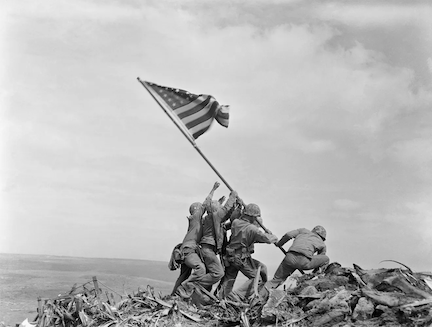William Tecumseh Sherman – Conservationist

If you mention William Tecumseh Sherman to anyone with even a nodding memory of American history, they will remember his immensely destructive “March to the Sea.” However, few people know that after the Civil War, Sherman became a devout believer in protecting the land.
The March To The Sea
Sherman brilliantly and ruthlessly split the Confederacy and destroyed immense swaths of beautiful land. This remorseless campaign of destruction was not done out of personal anger but out of military necessity. To bring a rebellion whose economic support was created by farming and the brutal enslavement of human beings was a necessity for the salvation of the USA. Nonetheless, the physical damage inflicted by Gen. Sherman’s Army was almost indescribable. Some of the destruction can be explained as necessary to provide food and sustenance to an army cut off from its supply line. Some of it can be explained as destroying the economic means of support for a traitorous rebellion against the United States. This brief post does not attempt to explain or describe the March but offers insight into a little-known aspect of William Tecumseh Sherman: conservationist.
Sherman’s Neckties
 To offer just a brief illustration of the utter
To offer just a brief illustration of the utter
devastation inflicted by Sherman’s Army of Liberation, consider the widespread use of the so-called “Sherman’s Neckties.”
These iconic symbols of the power of the United States Army were scattered throughout the surrendered territory of the treasonous Confederacy. To create a “Sherman Necktie, American soldiers would rip up Confederate railroad tracks, heat the iron, and wrap the captured steel around nearby trees. The soldiers under General Sherman were so  adept that they began twisting the iron to form the letters “U” and “S” to remind the insurrectionists. On a practical level, the destruction of the railroad tracks hastened the end of the barbaric practice of slavery. But the “Sherman Necktie” also served as a visual reminder of Sherman’s March.
adept that they began twisting the iron to form the letters “U” and “S” to remind the insurrectionists. On a practical level, the destruction of the railroad tracks hastened the end of the barbaric practice of slavery. But the “Sherman Necktie” also served as a visual reminder of Sherman’s March.
William Tecumseh Sherman: Conservationist
Sherman stayed in the Army for most of the rest of his life. When he retired at 64, he moved to New York City, where he became devoted to the theater and art. He was a popular speaker, indulging his fondness for reciting Shakespeare. However, one of the last great causes of his life was the conservation of America’s natural wilderness. Theodore Roosevelt had formed the “Boone and Crockett Club,” aiming to regulate hunting and preserve natural spaces. Sherman’s role on the board was of tremendous value to the movement. Quoting from the website of the organization:
 Theodore Roosevelt was a firsthand witness to the near decimation of one of our nation’s most valuable resources — its wildlife. When he committed himself to restoring America’s wildlands, he did so with characteristic zeal. Founding the Boone and Crockett Club was one of his first steps. Working with Club Members George Bird Grinnell, General William Tecumseh Sherman, Gifford Pinchot, and twenty other visionaries comprised of outdoor sports enthusiasts, scientists, military and political leaders, explorers, artists, writers, and industrialists, the foundation for the world’s greatest conservation system was laid.”
Theodore Roosevelt was a firsthand witness to the near decimation of one of our nation’s most valuable resources — its wildlife. When he committed himself to restoring America’s wildlands, he did so with characteristic zeal. Founding the Boone and Crockett Club was one of his first steps. Working with Club Members George Bird Grinnell, General William Tecumseh Sherman, Gifford Pinchot, and twenty other visionaries comprised of outdoor sports enthusiasts, scientists, military and political leaders, explorers, artists, writers, and industrialists, the foundation for the world’s greatest conservation system was laid.” 
Today’s club remains a leader in the conservation movement and encourages responsible hunting procedures. It is also a strong advocate for addressing climate change!
A small measure of their early success can be attributed to William Tecumseh Sherman, Conservationist! Although Sherman was nowhere near as important to the organization’s management as Roosevelt and Gifford Pinchot, his personal commitment and public prestige greatly aided the cause. He died not long after the club had taken root. It is ironic and understandable that a man whose name is associated with the destruction of so much land dedicated part of his retirement to restoring the natural beauty of the American landscape.













Not a Civil War buff, but really enjoyed the article. Thanks for sharing.
I do not know much about Sherman. This was an interesting article.